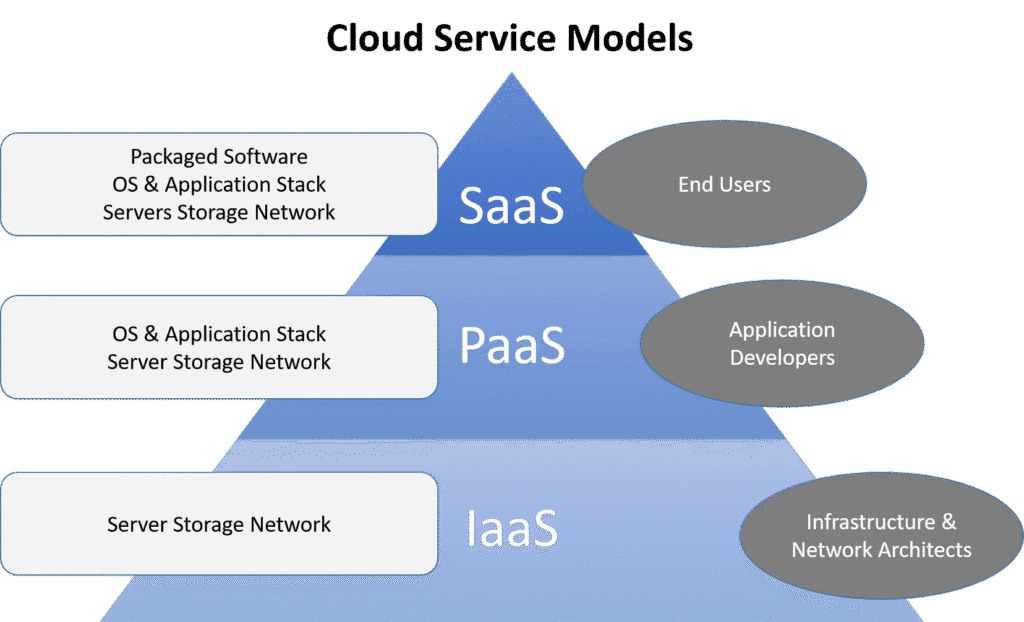Cloud computing has become a vital part of organizations and businesses globally. Why? Due to the numerous advantages of cloud computing, such as cost-effectiveness, remote access, enhanced productivity and performance within organizations, and improved security.
Cloud computing stores files in large external hard drives or local storage devices, allowing users remote access to data and resources, thereby eliminating the need to invest in physical hardware or maintain an in-house data center.
Before we start discussing cloud computing characteristics, we will brush up our knowledge on what cloud computing is, types and advantages of cloud computing, some vital features of cloud computing models, and courses you can pursue to become a cloud computing expert.
What is Cloud Computing with Example
The most important aspect of cloud computing is that it transfers computing services, like networking, storage, analytics, and servers, online. Your organization’s databases will not be physically present but will be available on the internet. This enhances flexibility as the users can access these databases remotely and at any time, whether off-site or on-site premises. This enables users to utilize a shared resource and save a ton of money on building and maintaining their own infrastructure.
Example of Cloud Computing

The most popular example is Google Docs. Users can write, edit, share, and comment on docs online without installing any software or application on their devices. All the documents are stored on cloud servers, and you can access them from anywhere, on any device. The days of the Microsoft Word application are almost gone, with Google Docs becoming the first choice for workplaces.
Some other popular examples include:
- Zoom
- Dropbox
- Microsoft Teams
- AWS Lambda
- Microsoft Azure
Types of Cloud Computing
Cloud computing offers 3 deployment options, and a bonus one:
- Private Cloud: An organization’s private and protected cloud setup that allows it to enjoy cloud computing benefits without letting go of its IT control.
- Public Cloud: In this case, users get cloud access from third-party vendors. They utilize the vendor’s cloud infrastructure to perform tasks, build applications, store data, etc. The vendor is responsible for infrastructure maintenance and security.
- Hybrid Cloud: As the name suggests, a hybrid cloud merges the features of both private and public clouds. It works using a public cloud solution and on-prem infrastructure to improve IT offerings.
- Multicloud: At times, organizations use cloud solutions from multiple vendors. This allows organizations to eliminate dependency on a single vendor and utilize different features of each vendor.
Cloud Computing Benefits For Modern Workplaces
Cloud computing is gaining popularity and acceptance in 2025 workplaces due to the multitude of advantages it offers.
- Space saving
- Infrastructural flexibility
- Wide accessibility across devices, and also remotely
- Saclability as per the requirement
- Enhanced speed resulting in increased productivity
- High security
- Cost reduction
- Decreases environmental impact, promotes sustainability
Key Characteristics of Cloud Computing You Need To Know
Post-pandemic, remote working has become the norm. This not only promotes employment flexibility but also cuts costs for the employer on resources. Cloud computing in remote working is an ideal solution for accessing resources from anywhere and any device. It supports collaboration within teams, no matter where each team members are located. I am going to briefly discuss some other vital characteristics of cloud computing.
Self Services On-Demand
With cloud computing services, users can themselves monitor, provision, and manage resources as per their requirements. There is no need for any additional human administrators.
Sustainable Resource
To decrease environmental impact, cloud service providers are switching to more sustainable practices, such as using renewable energy sources and developing energy-efficient data centers.
Widespread Network Access
The computing services are given over heterogeneous devices and standard networks.
Highly Automated
Cloud computing software is mostly automated, so there is not much need for manual intervention. This allows users to easily manage and deploy resources.
Scalability
As computing resources are online, organizations can easily scale up or down as needed. When the user needs extra resources, let’s say for more data backup, the cloud provider gives more storage. It can be scaled down just as easily and quickly when the need is over.
Security
Renowned cloud providers do not cut costs here. They invest significantly in security measures so that all users’ data and sensitive information are protected.
Resource Sharing
Information technology resources like servers, services, applications, and storage are shared across numerous applications and users, uncommittedly. A single physical resource provides services to multiple clients.
Extensive Pricing Models
Cloud service providers keep their clients happy by offering a variety of pricing modes, from pay-per-use, subscription-based, to spot-pricing. This elevates the service offerings and attracts more clients from small, medium, and large businesses.
Service Monitoring
Cloud providers track the usage of their services for each organization and user. This offers both the party transparency of how much resources have been used and helps with billing and effective resource utilization.
Highly Reliable
Cloud computing services are developed with redundancy and to be resistant to faults. This ensures users of increased availability and reliability.
Multi-Tenancy
Cloud computing allows multiple users and organizations to reap benefits from one set of shared resources.
Virtualization
Cloud providers abstract underlying hardware resources and offer them to users as logical resources using virtualization technology.
Also Read: What is Virtualization? Types of Virtualization in Cloud Computing
Key Features of Cloud Computing Models
In this section, I’m sharing some features of popular cloud computing models like PaaS, IaaS, and SaaS.

Key Features of PaaS
- PaaS offers a web-based development option for databases and uses API or point-and-click tools to change the application code.
- Allows a secure and scalable web service gateway.
- Offers multiple tools and techniques to develop workflow, approval procedures, and regulations.
- Provides a flexible interface alongside other applications on the platform.
- Offers application links instead of hosting them on platforms.
Key Features of IaaS
- Comes with a highly flexible pre-installed software virtual system.
- Offers comprehensive backup and safety measures.
- Has an abundance of block storage, file storage, and object storage systems.
- Aspects like load balancers, firewalls, VPN, etc., provide enhanced security, connectivity, and reliability.
- Users do not require the service provider’s support to demand services and access them.
Key Features of SaaS
- Enables availability and accessibility on the internet.
- Software maintenance is taken care of by the service provider.
- Flexible billing options, either subscription-based or on a pay-as-you-use basis.
- Users can ask for services and access them on the spot.
- Service providers upgrade the software automatically without disturbing the existing workflow.
Also Read: Migrating to the Cloud: Top 10 Data Migration Challenges and Solutions
Some Popular Cloud Computing Online Courses
Many cloud computing providers offer courses on this specific subject. Some comprehensive courses are listed below.
From Amazon Web Services (AWS)
- AWS Certified Cloud Practitioner
- AWS Certified DevOps Engineer – Professional
- AWS Certified Solutions Architect Associate
- AWS Certified Solutions Architect – Professional
- AWS Certified Developer
- AWS Certified SysOps Administrator – Associate
From Microsoft Azure Certification
- Microsoft Certified – Azure Fundamentals
- Microsoft Certified – Azure Administrator
- Microsoft Certified – Azure Developer Associate
- Microsoft Certified – Azure Solutions Expert
- Microsoft Certified – DevOps Engineer Expert
From Google Cloud Platform (GCP)
- Google Cloud Digital Leader
- Google Associate Cloud Engineer
- Google Professional Cloud Architect
- Google Professional Data Engineer
Cloud Computing is the Way To Go!
As per Precedence Research, the cloud computing market has reached $912.77 billion globally in 2025. Quite the sharp hike from $156.4 billion in 2020. The reason is that more and more enterprises are noticing the benefits of transferring their workload to the cloud.
As already mentioned, the advantages of cloud computing are not just several but applicable across sectors. From large and medium organizations dealing in healthcare, financial services, and data, to Instagram small businesses, everyone can enhance productivity with cloud computing. According to Fortinet, around 60% of organizations are using cloud computing to run over half of their workloads.
Today, cloud computation can’t be seen as an option, but as a key solution to maintaining competitive advantage, increasing agility, securing resources and data, and transforming the workplace with the evolving digital landscape.
Related Reads: AI & Common Sense, Will This Union Ever Be Possible?
Read More: What Is Data Collection? Methods, Challenges, Post-Processes, and Tools






